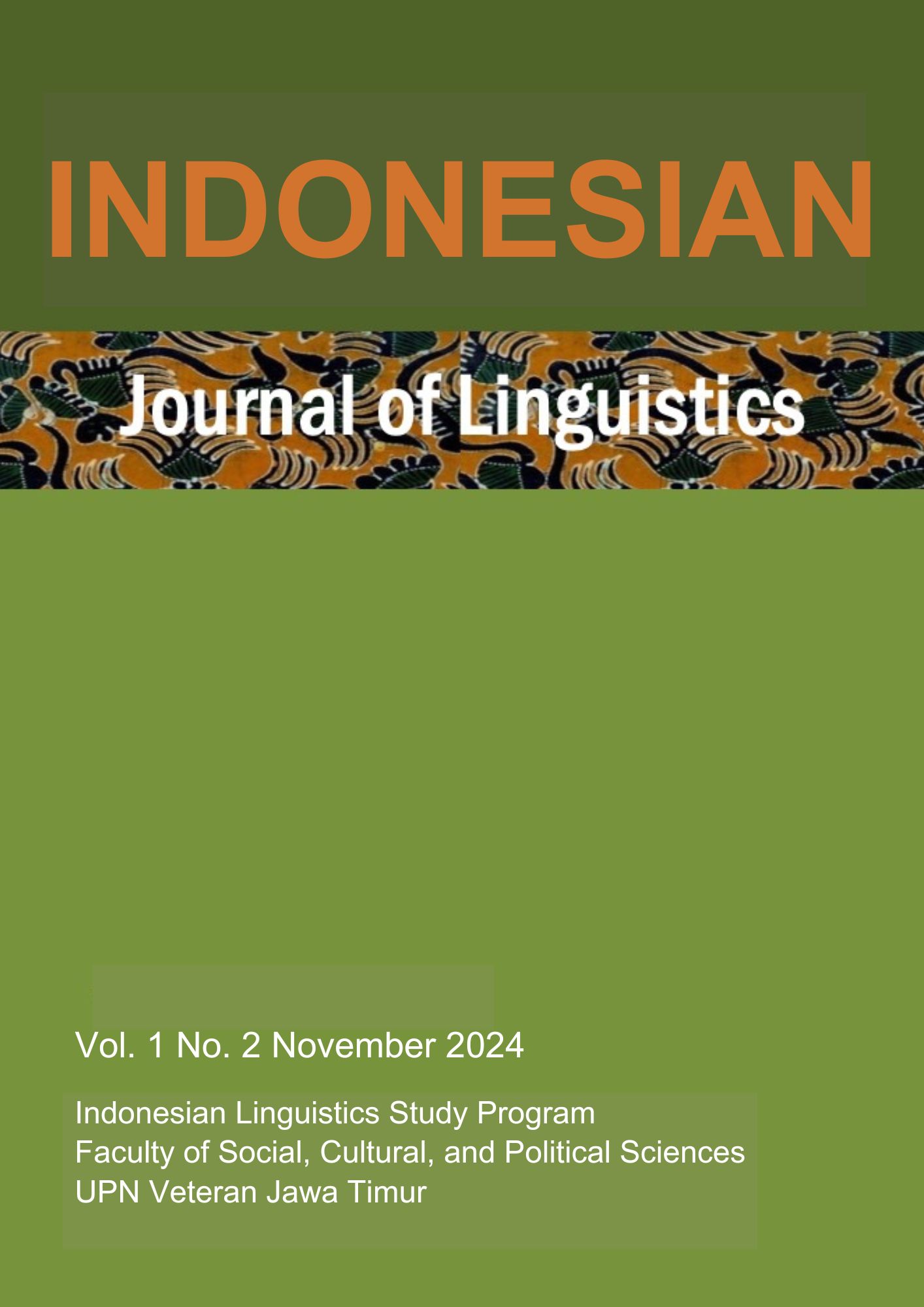PERKEMBANGAN FUNGSI DARIPADA DALAM SURAT KABAR ABAD KE-19 HINGGA ABAD KE-21
DOI:
https://doi.org/10.33005/ijl.v1i2.14Keywords:
Functions of Daripada, Language Development, NewspapersAbstract
This study discusses the development of the function of daripada in Malay-Indonesian newspapers from the 19th to 21st centuries. This study aims to trace and outline functions of daripada used in the newspapers. This diachronic research uses data corpus from the newspaper Bintang Timor (19th century) and Kompas (20th and 21st centuries). The newspapers are taken from the roll film archived in the National Library of the Republic of Indonesia and e-paper on the official website of Kompas.id. The process of analysis and calculation of the functions was completed using Ant. Conc. Furthermore, the results are displayed descriptively in tables and diagrams. Based on the results of this study, there are eight functions of daripada. These functions are daripada as comparative markers, source markers, topic markers, causative markers, inceptive-time markers, possessive markers, exceptive markers, and negative markers. In the 19th century, eight of these functions emerged in varying frequencies. In the 20th century, there were only four functions that arose and survived, those were daripada as comparative markers, possessive markers, source markers, and topic markers. In the 21st century, there is only one function that arises and survives, that is daripada as a comparative marker. In general, from the 19th to 21st centuries, daripada was experiencing a narrowing of the meaning and function.
References
Adam, A. B. (2003). Sejarah Awal Pers dan Kebangkitan Kesadaran Keindonesiaan, 1855-1913 (terj.). Jakarta: Pustaka Utan Kayu.
Alwi, H. d. (2003). Tata Bahasa Baku Bahasa Indonesia Edisi Ketiga. Jakarta: Balai Pustaka.
Hill, D. T. (2011). Pers di Masa Orde Baru. Jakarta: Yayasan Pustaka Obor Indonesia.
Hollander, J. d. (1984). Pedoman Bahasa dan Sastra Melayu. Jakarta: PN Balai Pustaka.
Kamus Besar Bahasa Indonesia: Edisi V. Daring.
Mahsun. (2005). Metode Penelitian Bahasa: Tahapan Strategi, Metode, dan Tekniknya. Jakarta: PT Rajagrafindo Persada.
Oetomo, D. (1991). "The Chinese of Indonesia and the Development of the Indonesian Language". Indonesia, hlm. 53-66.
Paget, R. K. (1967). "Indonesian Newspapers 1965-1967". Indonesia, hlm. 169-210.
Pieters, P. (1902). Praktische Indische tolk = Djoeroe-båså Indijå: Gesprekken en Woordenlijst in Hollandsch, Maleisch en Javaansch. Amsterdam: Van Holkema & Warendorf.
Rivai, H. M. (2000). Cerita Rakyat Kalimantan Barat: Asal Usul Raja-Raja Melayu. Pontianak: Percetakan Romeo Grafika.
Sabila, Amanda Asma. (2018). "Perkembangan Preposisi Daripada dari Abad ke-17 sampai Abad ke-21". Skripsi. Depok: Universitas Indonesia.
Santana K, S. (2005). Jurnalisme Kontemporer. Jakarta: Yayasan Obor Indonesia.
Santana K, S. (2017). Jurnalisme Kontemporer Edisi 2. Jakarta: Yayasan Pustaka Obor Indonesia.
Slametmuljana. (1957). Kaidah Bahasa Indonesia II. Jakarta: Penerbit Djambatan.
Sneddon, J. (2003). The Indonesia Language: Its History and Role in Modern Society. Sydney: UNSW Press.
Wijk, D. G. (1985). Tata Bahasa Melayu. Jakarta: Penerbit Djambatan.
Downloads
Published
How to Cite
Issue
Section
License
Copyright (c) 2024 Indonesian Journal of Linguistics

This work is licensed under a Creative Commons Attribution-ShareAlike 4.0 International License.
Indonesian Journal of Linguistics by Universitas Pembangunan Nasional “Veteran” Jawa Timur is licensed under a Creative Commons Attribution-ShareAlike 4.0 International License.
1. The journal allows the author to hold the copyright of the article without restrictions.
2. The journal allows the author(s) to retain publishing rights without restrictions
3. The legal formal aspect of journal publication accessibility refers to Creative Commons Attribution Share-Alike (CC BY-SA).
4. The Creative Commons Attribution Share-Alike (CC BY-SA) license allows re-distribution and re-use of a licensed work on the conditions that the creator is appropriately credited and that any derivative work is made available under “the same, similar or a compatible license”. Other than the conditions mentioned above, the editorial board is not responsible for copyright violation.








